CHICAGO (AP) — It’s a toothy giant that can grow longer than a horse and heavier than a refrigerator, a fearsome-looking prehistoric fish that plied U.S. waters from the Gulf of Mexico to Illinois until it disappeared from many states a half-century ago.
Huge, once-hated fish now seen as weapon against Asian carp | Fox17
Protecting natural resources, including air, land and water. Also of interest are threatened and endangered species as well as endangered species. Conservation (wildlife, soil, water, etc.) issues also discussed. Topics include: RCRA, CERCLA, Clean Water Act (CWA), NEPA, 404 Permits, EPCRA, FIFRA, and others.
Search This Blog
Friday, July 29, 2016
Thursday, July 28, 2016
Citizen Scientists Help Monitor Nation’s Watershed Health
From the #USDA:
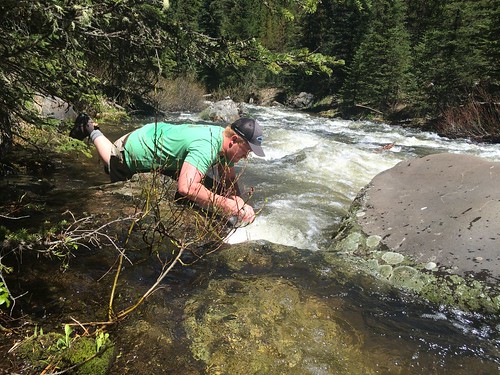

Posted by Leanne Veldhuis, National Partnership Office, U.S. Forest Service, on July 27, 2016 at 11:00 AM

Citizen scientist volunteer Kenny Moore collects a water sample from one of over 60 project sites. All volunteers are trained to follow the collection requirements that ensure their samples can be accurately analyzed in the lab. They also visit the same site four times a year even in winter. Photo credit: Leanne Veldhuis
What do adventurers, microplastics, and your national forests have in common?
Water.
Our national forests and the glaciers, lakes, and rivers running through them form the headwaters for the majority of America’s drinking water. This includes many of our big cities and growing urban centers, even those that are far away from national forests. Because of its importance, protecting clean, abundant water is a priority for the U.S. Forest Service, and thankfully, it’s a priority of a growing number of our partners.
Adventurers and Scientists for Conservation is a nonprofit organization of folks who combine their skills as elite outdoors recreationists with a passion for science and monitoring and stewardship. They are leading a study of microplastics, which are synthetic fibers that are in many common products like clothing, face washes and toothpaste, and have been found in the Gallatin River, primarily within theCuster-Gallatin National Forest and connects through Bozeman, Montana, and Yellowstone National Park.
Microplastics are really good at absorbing chemical contaminants like DDT, PCBs and other chemicals. As microplastics float along in a river, they spread these pollutants across the environment, or may deposit themselves in the sediment of waterways. Similarly, a small piece of plastic also looks like food to fish, which then becomes a part of the human food chain.
With this project, Adventurers and Scientists leaders train volunteers in a multi-year citizen science effort. The citizen scientists then collect research-grade water samples from dozens of sites across the Custer-Gallatin, and send them to research scientist Abby Barrows in her lab in Stonington, Maine to detect the presence of any microplastics.
Anyone who is interested and has the skills to access the sometimes remote forest sites can volunteer to be a citizen scientist.
I hiked into the Montana wilderness with several citizen scientists, and learned that not only is plastic being found in the middle of the ocean, but microplastics have been found in 71 percent of the samples on the Custer-Gallatin – even those deep in the secluded, backcountry areas of the Gallatin portion of the forest where there is very little human activity.
The Forest Service’s land management activities include a focus on enhancing clean water, and encouraging conservation education and involvement in citizen science. But the agency cannot manage those activities off of the forest that end up harming our forests’ health.
The Forest Service looks forward to partnering with more groups like Adventurers and Scientists, and most importantly partnering with individuals like you to help sustain our natural resources for the greatest good.

Citizen scientist volunteer Sydney Parkhill checks the water temperature at a sample site. Environmental factors like temperature can help researchers compare data from different times of year, to provide clues for how microplastics persist in our river systems. Photo credit: Leanne Veldhuis
Related Posts
Thursday, July 21, 2016
Following Water in the Rocky Mountains
From the #USDA:
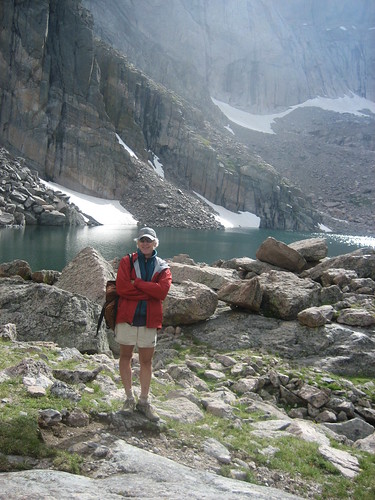
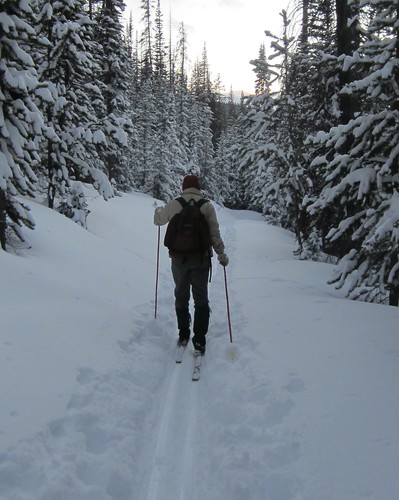
Posted by Thomas C. Brown, Rocky Mountain Research Station, U.S. Forest Service, on July 20, 2016 at 11:00 AM

Tom Brown hiking Chasm Lake, Rocky Mountain National Park. Photo credit: Tom Brown
In cycling the Continental Divide in Colorado, you get a vivid picture of where much of our water comes from. During my long bike rides up there, I commonly find snow still melting in June. This snowmelt adds to streamflow that becomes our renewable water supply and my drinking water supply.
The part of rain and snowfall that does not naturally go back into the atmosphere becomes our water supply and it varies greatly across the United States. In the wettest regions, such as New England, precipitation is plentiful and about half of it ends up in streams or replenishes ground water supplies.
At the other extreme—that is, in much of the Southwest—precipitation is scarce and only about five percent of it becomes part of the water supply. The rest evaporates or is used by natural vegetation. Across the Interior West, a region from Arizona and New Mexico to Montana and North Dakota, about 13 percent of precipitation goes into the water supply in an average year.
In the west, most precipitation falls in the high country, where temperatures and evaporation are lowest, meaning it is the source of the majority of the renewable water supply. And that is lucky for the people who live in the west, because much of the high country mountains are forested or protected, so that the quality of the resulting streamflow tends to be very good.
For the United States as a whole, about 55 percent of our drinking water comes from diverting surface flows. The rest is obtained by pumping ground water.
The quality of that water is vitally important. When it comes to diverting surface water, what happens on the watershed upstream is essential, because it determines the downstream financial cost of bringing the water up to drinking water quality standards.
In general, the closer you live to protected land or to forested land, the better is the water quality of the streamflow.
Across the west, nearly 50 percent of the renewable water supply in an average year originates on or adjacent to National Forest land, with another 6 percent coming from National Park lands. And across the west, depending on how forests are defined, 58 to 77 percent of the renewable water supply originates on forests, with some additional water flowing from high-elevation alpine areas.
In the northeast 60 percent of the renewable water supply originates in forests. It is not an exaggeration to say that forests and protected lands play an extremely important role in the provision of water in the United States.
As I play in and around our forests in the west, I am always aware of where my water comes from.

An outdoors enthusiast cross-country skiing near Cameron Pass, Arapaho-Roosevelt National Forest. Photo credit: Tom Brown
Related Posts
Wednesday, July 20, 2016
Saturday, July 16, 2016
Tracking Songbird Progress in Pennsylvania’s Forests
From the #USDA:
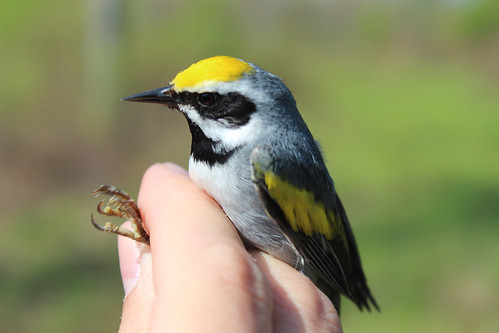
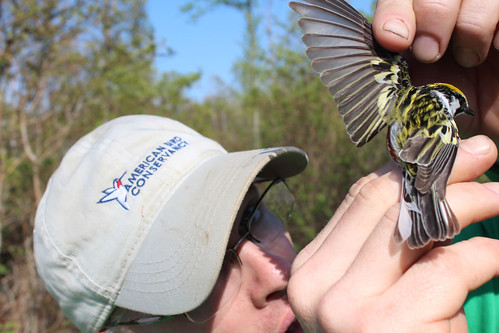
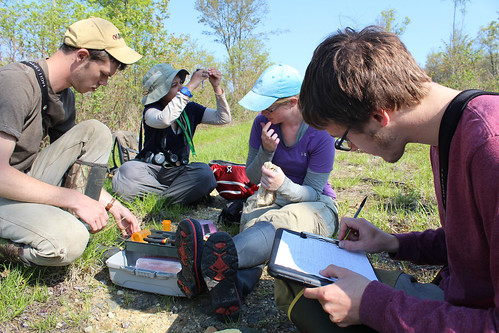
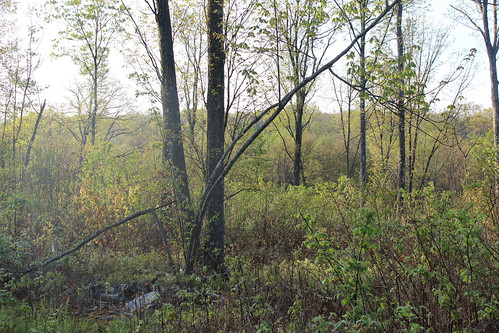
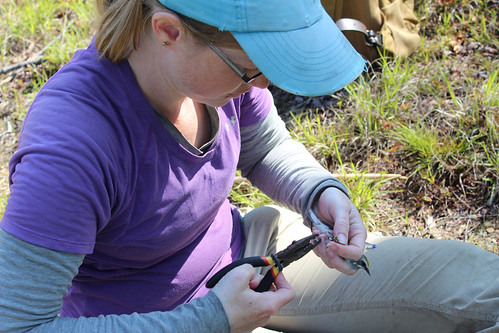
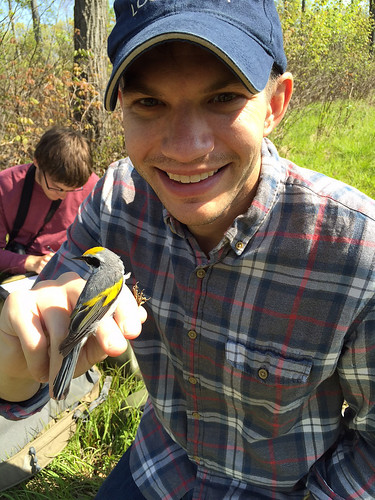
Posted by Justin Fritscher, Natural Resources Conservation Service, on July 13, 2016 at 11:00 AM

The golden-winged warbler has suffered a 66 percent population decline since the 1960s.
“Hear that?” Dr. Jeff Larkin bent his ears to a nearby cluster of trees amid a sea of briars.
“There’s one in there,” Larkin said excitedly. We were on the trail of a golden-winged warbler, a black-bibbed songbird, which winters in South and Central America and spends its springs and summers here in Appalachia where it breeds, nests and raises its young.
Larkin, professor of wildlife ecology and conservation at Indiana University of Pennsylvania and forest bird habitat coordinator for American Bird Conservancy, has tracked golden-winged warblers for years. And like many others, he has witnessed the bird’s population peril. The bird depends on the cover of early successional habitat to hide its ground nests. Early successional habitat, or young forests, have disappeared across the landscape as forests mature, timber harvest practices change, and disturbance events like fire are suppressed.

Dr. Jeff Larkin, Indiana University of Pennsylvania professor, checks this chestnut-side warbler for wing mites. Location: Centre County, PA. Credit: Justin Fritscher, NRCS.
Signs of Progress
But this day – here in the woods of Centre County, Pennsylvania – was a day of hope. Larkin and his team witnessed several females building nests on lands managed for early successional habitat.
“We’ve found that when the habitat is managed correctly, you’ll can attract high densities of nesting golden-winged warblers,” he said. The bird likes young forest habitat interspersed among large tracts of contiguous forest with variable age classes. This is important because when young leave the nest, they can transition to using a mix of older forests prior to migration.
Larkin and his partners are working with public land managers and with USDA’s Natural Resources Conservation Service (NRCS) and landowners to create high-quality golden-winged warbler nesting habitat using sustainable forestry practices.
“More than 80 percent of the bird’s nesting habitat in the Appalachians is on privately owned forests, which means the land management decisions by individual landowners is critical to the bird’s success,” he said.
Help for Private Landowners
NRCS provides landowners with technical and financial assistance to help them carry out sustainable forestry practices. Larkin and his team provide the scientific backbone to guide the development of conservation guidelines and to evaluate the bird’s response to conservation efforts. This past summer, his team has been out in the woods conducting bird surveys, banding adults, locating and monitoring nests, and capturing and banding fledglings.

Indiana University of Pennsylvania students trap, band and release birds to help study their response to conservation activities. Location: Centre County, PA. Credit: Justin Fritscher, NRCS.
This year, they caught and released an adult male that that was originally banded in 2011. “That’s a long-lived bird, and it’s exciting to see them return to this habitat year after year,” he said.
The golden-winged warbler is a target species of Working Lands for Wildlife (WLFW) partnership. Since 2012, NRCS has worked with landowners and conservation partners to establish more than 13,000 acres of nesting habitat for the species.
Science Shows Sustainable Forestry Works
This field work by Larkin and his team shows that these conservation efforts are helping the species. They have found that more golden-winged warblers use habitat when early successional forests are clumped close to each other, and when some large trees are left scattered across a timber harvest.

Clumps of trees among early successional forests provide optimal habitat for the golden-winged warbler. Credit: Justin Fritscher, NRCS.
Additionally, lands managed with sustainable forestry practices are home to an average of three golden-winged warbler territories for every 50 acres, and those sites provide habitat for more than 120 bird species – a third of which are suffering from significant population declines.
For example, Larkin’s team is finding that conservation work for golden-winged warbler greatly benefits the American woodcock, a popular game species that conducts its sky-dancing courtship as well as nests, raises brood and forage in young forests. Monitoring on private land sites enrolled in NRCS programs that target golden-winged warbler nesting habitat are revealing that nesting woodcock occupy 40 percent to 80 percent of the sites surveyed. Larkin and his research team predict these numbers will increase as the habitat to develop into a structurally diverse young forest.

Renae Poole, who works with landowners to use NRCS conservation efforts to help the golden-winged warbler, bands a bird. Location: Centre County, PA. Credit: Justin Fritscher, NRCS.
More Information
Download a new NRCS report by Larkin and other scientists: Sustainably Managing Forests Creates Golden-winged Warbler Breeding Habitat. For more information on how wildlife are thriving on private lands, check out NRCS’ new magazine, Working Lands for Wildlife: A Partnership for Conservation Landscapes, Communities & Wildlife. Landowners interested in assistance to implement sustainable forestry practices should contact their local USDA service center.

Justin Fritscher, NRCS public affairs specialist, with a newly banded golden-winged warbler.
Related Posts
Tuesday, July 12, 2016
USDA Blog » The Very Hungry Caterpillar is Real, and It’s More Than Just a Nuisance
While being outside in Massachusetts this June, I first noticed it. A lot of leaves were falling from the trees, only these were chewed leaf parts, not whole leaves.
USDA Blog » The Very Hungry Caterpillar is Real, and It’s More Than Just a Nuisance
USDA Blog » The Very Hungry Caterpillar is Real, and It’s More Than Just a Nuisance
Happier than a Pig in Mud – Feral Swine Damage to Water Quality
From the #USDA:
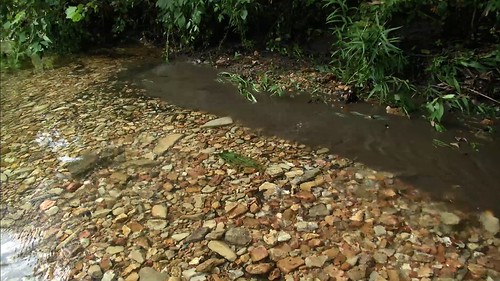
Posted by Jeanine Neskey, APHIS Wildlife Technician, on July 8, 2016 at 11:00 AM

An example of the damage feral swine can have on water quality.
How does the old saying go? That’s right, “Happier than a pig in mud!” Feral swine are no exception to this old farmer’s anecdote. Because they lack sweat glands, wallowing in mud and water is an instinctual behavior necessary for them to maintain a healthy body temperature. Unfortunately this behavior has cascading impacts, not only to water quality in individual streams, ponds, and wetlands, but to entire watersheds and ecosystems.
Excessive feral swine traffic around wallows and water sources causes erosion along stream banks and shorelines. Sounders, or family groups, of feral swine spend large amounts of their day around the wallow, especially in hot weather, which means they leave significant amounts of urine and feces in and around the water. The impacts to water quality go far beyond the immediate wallow site when silt, excrement, and potentially harmful pathogens, are washed down stream.
Water polluted from feral swine wallowing can be contaminated with parasites and bacteria such as giardia, salmonella, and pathogenic E. coli that could be transmitted to humans and other animals. This can happen when feral swine use an agricultural water source, such as an irrigation pond, or if feral swine are active in an area people use for recreation. Contamination can even occur if feral swine use a site upstream in the watershed and rain runoff carries contaminates downstream. In many watersheds, feral swine damage to water quality, wetlands, and riparian habitats also threatens native wildlife, including threatened and endangered species, which depend on these ecosystems.
The pathogens transmitted by feral swine can sicken livestock, pets, and people. Livestock and pets may become ill by drinking water from streams or ponds contaminated by feral swine. Humans are at risk when swimming or wading in contaminated water, from eating crops in which feral swine have rooted or defecated, or if feral swine have contaminated the irrigation source for the crops. Feral swine are suspected to have played a role in the contamination of surface water and spinach fields in California, causing a food-borne illness outbreak which sickened 205 people and resulted in three deaths.
No matter the water source, feral swine will muddy it. The U.S. Department of Agriculture’s Animal and Plant Health Inspection Service (APHIS) National Feral Swine Damage Management Program has been appropriated $20 million annually to address the management of damage caused by invasive feral swine. The program’s overall goal in the United States and its territories, is to protect agriculture, natural resources, property, animal health, and human health and safety by managing damage caused by feral swine and, where possible, reducing or eliminating feral swine populations. The program works in cooperation with states, tribes, and other federal and international agencies, universities, and other stakeholders to achieve management goals. Visit our website for more information.
For an interactive look at USDA’s work to ensure your food is safe, visit the USDA Results project on Medium.com and read Chapter Seven: Safer Food and Greater Consumer Confidence.
Related Posts
Thursday, July 7, 2016
Tuesday, July 5, 2016
Alaska Beavers Entertain Web Cam Viewers Around the World
From the #USDA:
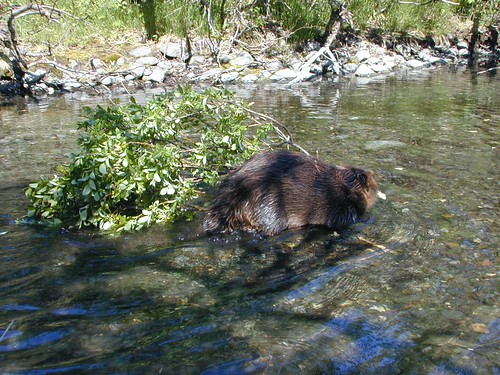
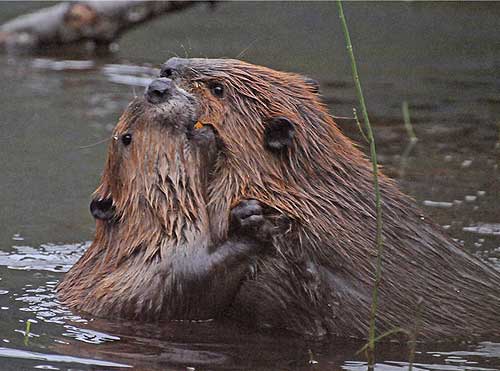
Posted by Teresa Haugh, U.S. Forest Service, on July 5, 2016 at 3:00 PM

A busy beaver gathers a tree sprig to help build his lodge on Steep Creek on Alaska’s Tongass National Forest. Photo courtesy of Don Martin, Tongass National Forest
Two beavers sleep peacefully in their den on Steep Creek in Juneau, Alaska, never realizing they are being watched via a hidden infrared camera. Hundreds of viewers tune-in to a live video feed on theU.S. Forest Service YouTube Channel throughout the day to see the beavers come and go, breathing rhythmically as they nap and then stretch, chew and scratch an occasional itch.
Although the beaver cam is now an established fixture at the Mendenhall Glacier Visitor Center, it started out of simple curiosity according to Pete Schneider, a natural resource specialist for theTongass National Forest. He and fisheries biologist Don Martin first experimented with a beaver cam in 2004 after they saw a cache of food in front of a beaver lodge on Steep Creek. It was a sure indication that beavers, who have a tendency to move around, were actually using the lodge at the time. They decided to run electricity through a conduit to that location in order to power an infrared camera.
Schneider and Martin rigged their first camera on a piece of rebar, and poked it through a hole in the lodge. “It worked like an upside down periscope,” Schneider said. “We could twist it left and right and move it up and down. Don, who was watching a handheld monitor, said, ‘Hey, there’s a beaver right there!’ That was our start.”
They fixed the camera in place, insulated it, and attached it to a closed-circuit monitor which could be seen in the visitor center, even in the winter. It was a great show, but limited to those who were at the glacier in person. It would be years before it became possible to live stream the video on the internet.
The two beavers in the lodge this summer have already received thousands of web views. In the past, Schneider has seen as many as eight at a time in residence.
Opinions differ about the value of beavers in the ecosystem at Steep Creek. Beaver tend to have the most positive impact in areas that lack ponds and slow water rearing areas. Steep Creek is not in short supply of either due to its location by Mendenhall Lake and nearby kettle ponds, which are holes created by melting ice chunks. Beaver can plug culverts that extend under roads or temporarily inhibit the movement of substrate—spawning salmon need that constant movement of gravel for their nests. If the beaver population grows too robust, they could impact access to the spawning grounds for adult fish.
Nevertheless, Forest Service staff have managed a workable balance in allowing the beavers to share the rich resources of this area.
Beavers are primarily nocturnal and usually occupy the lodge during the day. To date, the cam has received more than 70,000 minutes of watch time from viewers across the United States as well as foreign countries with an average watch time of about 15 minutes. Best viewing times are between 7 a.m. and 7 p.m. Alaska Standard Time.

Beavers are part of the web of life in Steep Creek near the Mendenhall Glacier on Alaska’s Tongass National Forest. Photo: Tongass National Forest
Related Posts
Sunday, July 3, 2016
A Conversation with USDA Leader Lanon Baccam
From the #USDA:

Posted by Katelyn McCoy, USDA Office of Communications, on July 1, 2016 at 10:00 AM

Lanon Baccam, Deputy Under Secretary for Farm and Foreign Agricultural Services and USDA Military Veterans Agricultural Liaison, helps connect veterans with opportunities in the field of agriculture.
Lanon Baccam serves as the Deputy Under Secretary for Farm and Foreign Agricultural Services (FFAS). Baccam oversees the domestic programs within FFAS, including Farm Service Agency and Risk Management Agency. Baccam also serves as the USDA Military Veterans Agricultural Liaison. Being an Army veteran, he connects veterans with opportunities in the field of agriculture, providing information to returning veterans about services available to them through USDA.
This interview took place at Arlington National Cemetery, where scores of service men and women lay at rest after giving the ultimate sacrifice to protect our country.
“This is what we’re here looking at today. Every one of these headstones represents someone who gave their life for this country, and that to me, is one of the most compelling reasons why I work as hard as I do for our servicemen and veterans.” –Lanon Baccam
Why are military members and veterans a good fit for agriculture?
There is a certain value system that exists in rural America that are some of the same values that members of the military have. Respect for the land, hard work, and really just believing in something bigger than yourself. This drives them to serve. There’s no other group of people out there who are used to hard work, waking up early, staying up late and are mission focused. That’s why they’re a good fit for farming and ranching. It’s a business; there’s a lot of different aspects to it. There’s hands-on hard work, you’re outside. Military members spend a lot of time outdoors, and many of them don’t want to go back and sit at a desk all day, so getting into farming and ranching is a good transition for them, because it’s a more natural fit.
What are some ways you connect service men and women to agriculture?
In February, we signed a MOU with Hiring Our Heroes. Hiring Our Heroes is a program of the U.S. Chamber of Commerce Foundation, and Hiring Our Heroes works and coordinates directly with DOD and commanders around the country to host what I believe are the premier employment, or transition summits for veterans.
It’s really difficult to get a hold of these guys when they get out of the military. When I got out, I separated and was never contacted again. Having the ability to reach these guys through transition summits while they’re still serving is critically important for us to be able to continue to help them once they transition back to civilian life.
Are there programs available for soldiers returning home with disabilities?
We know there are a certain percentage of soldiers, service members and veterans who are experiencing disabilities; visible and invisible. Anecdotally, we know that farming and ranching is helping them, truly helping them.
There is therapeutic benefit to farming and ranching because these service members are getting out of the house, getting in to the ground, getting their hands dirty and finding a new purpose. They served this country admirably by protecting it, now they can continue their service by providing for it through agriculture.
As for a specific program, USDA funds an organization called AgrAbility. AgrAbility has been in service for decades, and they are an organization that helps people get or stay in farming and ranching if they have physical disabilities.
Do you have a veteran success story that benefitted from USDA programs?
In the broad sense, there’s been over 466 million dollars in farm loans to veterans since 2009. That’s almost 4,000 service men and women we’ve helped in seven years.
More specifically, there is a Marine veteran in California who served three tours in Iraq. He came back and started a produce farm operation which he sells at a local market. He became successful enough to hire more Marine veterans to come work for him and learn his system, so they can branch off and do it on their own. It’s become more of a training ground. He’s utilized multiple USDA programs such as Farm Service Agency (FSA), Natural Resource Conservation Service (NRCS) and I’m sure others as well.
What is the best part of your job, in your opinion?
Having spent time in the Army myself and having gone through this process already, it makes me feel good to know that I’m helping my brothers and sisters in arms. We are helping them find their next step, because it can be scary.
A lot of these folks, all they know professionally is the military. Branching out and stepping into the civilian workforce is really something they haven’t done before, and it’s difficult for them to even know where to start. In the military you’ve got your comradery with your squad mates and everyone else you work with; you’ve got somebody there who’s got your back. They’re afraid when they get out of the military they’re going to lose that. We’re showing them that’s not the case; at USDA, we’re going to be there every step of the way.
Any last minute thoughts?
At USDA, we use all our tools and resources and programs to try to make a difference in the lives of veterans. I try to make them understand that at USDA, we’re going to be there every step along the way to help them achieve their dreams of farming and ranching, and help them identify what’s available in the agricultural industry.
For more information on USDA programs available to veterans, please visit usda.gov/veterans.
Related Posts
Tags: AgrAbility, California, Department of Defense, FFAS, FSA, Lanon Baccam, NRCS, U.S. Army, veterans
Subscribe to:
Posts (Atom)